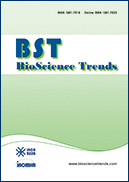Volume 8, Issue 1
Displaying 1-9 of 9 articles from this issue
- |<
- <
- 1
- >
- >|
Reviews
-
2014Volume 8Issue 1 Pages 1-10
Published: February 28, 2014
Released on J-STAGE: March 18, 2014
Download PDF (496K) -
2014Volume 8Issue 1 Pages 11-23
Published: February 28, 2014
Released on J-STAGE: March 18, 2014
Download PDF (444K)
Original Articles
-
2014Volume 8Issue 1 Pages 24-31
Published: February 28, 2014
Released on J-STAGE: March 18, 2014
Download PDF (1064K) -
2014Volume 8Issue 1 Pages 32-37
Published: February 28, 2014
Released on J-STAGE: March 18, 2014
Download PDF (508K) -
2014Volume 8Issue 1 Pages 38-44
Published: February 28, 2014
Released on J-STAGE: March 18, 2014
Download PDF (830K) -
2014Volume 8Issue 1 Pages 45-51
Published: February 28, 2014
Released on J-STAGE: March 18, 2014
Download PDF (1999K) -
2014Volume 8Issue 1 Pages 52-58
Published: February 28, 2014
Released on J-STAGE: March 18, 2014
Download PDF (641K) -
2014Volume 8Issue 1 Pages 59-63
Published: February 28, 2014
Released on J-STAGE: March 18, 2014
Download PDF (343K)
Case Report
-
2014Volume 8Issue 1 Pages 64-67
Published: February 28, 2014
Released on J-STAGE: March 18, 2014
Download PDF (1136K)
- |<
- <
- 1
- >
- >|
